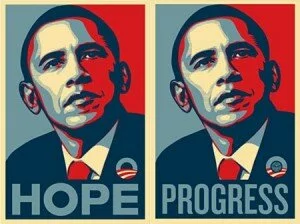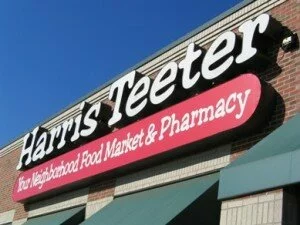
President Obama’s economic stimulus plan includes funding for “comparative effectiveness research,” which would study various prescription drugs, along with medical treatments and devices, to determine which perform best for the least amount of money.
As the Washington Post describes the program:
What’s best for insomnia — Lunesta, at about $6 a pill, or Zolpidem, at $2?
Should a man with prostate cancer choose radiation, surgery or “watchful waiting”?
Is it better to operate on a bad knee or get an injection of the joint fluid known as Visco.
To help doctors and patients decide, President Obama has dedicated $1.1 billion in the economic stimulus package for federal agencies to oversee studies on the merits of competing medical treatments.
The approach, known as comparative effectiveness research, is aimed at finding the best treatments at the best prices. Proponents say reducing ineffective or unproven care is one way to rein in health costs, which consume nearly 18 percent of the gross domestic product, straining family budgets, company profits and the federal government.
Big Pharma fought hard to remove this research from the stimulus bill, for obvious reasons — their business is based on maximizing profits, not maximizing cost-effectiveness.
As physician blogger Kevin MD writes:
Physicians need an authoritative source of unbiased data, untainted by the influence of drug companies and device manufacturers.
With treatments and medications announced daily, having an entity definitively compare these newer, and often more expensive, options with established treatment regimens will be particularly useful in everyday practice.
The only way to tackle such a huge project is with money, and indeed, the Obama administration recognizes this fact by including $1.1 billion in comparative effectiveness research in the economic stimulus package.
Clearly, the pharmaceutical and device industry would like both the public and physicians to continue to assume that “newer means better.” Not asking these questions allows them to continue promoting profit-making brand-name treatments.
Their motives in attempting to quash comparative effectiveness research could not be more obvious.
Healthcare policy guru Ezra Klein adds:
The fight over comparative effectiveness research is really a fight over who controls information. Right now, the pharmaceutical industry pays for most of the research and funds the most effective research distribution service (this service, incidentally, comes in the form of leggy former-cheerleaders and Miss America contestants…). That’s good for the pharmaceutical industry, which can emphasize the research aligns best with their business strategy.
The threat of comparative effectiveness review is that Pharma loses control of the information. An alternative information pipeline opens up. This one, to use Kevin’s evocative sentence, would be “untainted by the influence of drug companies and device manufacturers.” (It also won’t be delivered by former cheerleaders.)…
But don’t begrudge Pharma its efforts. As Kevin says, “their motives in attempting to quash comparative effectiveness research could not be more obvious.” The current regime is good for profits. And protecting profits is Pharma’s job. But it’s not good for the public. And protecting the public welfare is the government’s job.

We wrote recently about the rapidly growing business of mail-order pharmacies run by the pharmacy benefit managers (PBM) who work with employer-based insurance providers.
It’s been a trend with no small hint of irony. You see, when Canadian mail-order pharmacies came on the scene in the ’90s, representatives of Big Insurance and Big Pharma trashed the whole idea of the mail-order pharmacy. They said it was unwise — even dangerous — to order drugs without having face-to-face contact with your pharmacist. They said your relationship with your pharmacist was just as important as the one you have with your doctor.
All that would be lost, they said, if you ordered from an online pharmacy. Of course, now that they’ve figured out how to make a buck off of the idea, they love it.
And now, Big Insurance is moving toward a day when you may actually be forced to order your drugs online or through mail-order — whether you like it or not.
As U.S News reports:
Express Scripts, one of the nation’s largest pharmacy benefit managers, has developed a program [called] Select Home Delivery [that] automatically enrolls employees in the home delivery program unless they specifically opt out of it …
That’s right. If your employer’s PBM is Express Scripts, and they sign up for Select Home Delivery, mail-order will be the default option for all employees.
Mark my words here; this is the first of several shoes to drop. Up next:
1. Soon, all other PBMs will offer the same program.
2. Then, one PBM will come up with a program that makes participation in the mail-order program mandatory in order for employees to receive coverage — in the name of employer cost savings.
3. That will become the dominant model for employer-based prescription drug insurance.
Now, I haven’t factored in the uproar that this would cause with the Wal-Marts, Rite Aids and the like. Some kind of accommodation will probably have to be reached to make all the big-money players happy.
And of course, consumers won’t like it, because no one likes having their choices taken away. But how much power do consumers have these days in the face of Big Insurance and Big Pharma, anyway?
When you listen to Express Scripts tout the benefits of Select Home Delivery, you know it’s only the beginning:
“Moving from retail to home delivery may be the most powerful intervention we have today to improve therapy adherence,” says Bob Nease, chief scientist for Express Scripts, referring to patients who follow their prescribed drug regimens. Home delivery also saves patients money, typically up to a third of the prescription cost for a 90-day supply.
So far, about two dozen companies have signed up for the Select Home Delivery program. Home improvement retailer Lowe’s has seen the percentage of prescriptions filled through home delivery rise from about 14 percent to 40 percent since the company signed on, says Nease.
As you know, we at eDrugSearch.com are big fans of mail-order pharmacies. We were fans of mail-order pharmacies long before the insurance companies.
We know that mail-order pharmacies save healthcare consumers money. And we’re glad that millions of consumers will learn through programs like Select Home Delivery that they need not be scared of ordering drugs through the mail.
That will be especially important should these workers lose their jobs or prescription drug coverage — and realize they can pay up to 80 percent less on their medications by ordering through eDrugSearch.com’s network of licensed mail-order pharmacies.
All that being said, we continue to find the arrogance and hypocrisy of the big health insurance companies astounding.

Rite Aid is a $24 billion company operating more than 5,000 drugstores in 31 states, making it the third-largest pharmacy chain in the United States. But unless this overpriced retailer receives some bailout money from heaven (’cause it’s sure not coming from Washington), the year 2009 may be its last.
Motley Fool has just put it on its list of 15 companies that might not survive the year. Says the Fool:
Rite Aid. (Ticker symbol: RAD; about 100,000 employees; 1-year stock-price decline: 92%). This drugstore chain tried to boost its performance by acquiring competitors Brooks and Eckerd in 2007. But there have been some nasty side effects, like a huge debt load that makes it the most leveraged drugstore chain in the U.S., according to Zacks Equity Research. That big retail investment came just as megadiscounter Wal-Mart was starting to sell prescription drugs, and consumers were starting to cut bank on spending. Management has twice lowered its outlook for 2009. Prognosis: Mounting losses, with no turnaround in sight.
Rite Aid’s story, full of waste and mismanagement, is a classic illustration of why Americans save so much money through online and mail-order pharmacies. Whether these pharmacies are based in the United States or Canada, they require a fraction of the overhead of a big chain pharmacy — particularly one as poorly run as Rite Aid.
Rite Aid has been in trouble as far back as 1999, when it was busted by the news media (and investigated by state regulators) for questionable business practices like selling date-sensitive products well past their due dates. Rite Aid also had a doozy of an accounting scandal that led to jail time for several top ranking execs, including CEO Martin Grass.
Like many bloated Fortune 500 corporations, Rite Aid tried to put lipstick on the pig by acquiring competitors like Eckerd. It’s a quick way to boost your top line to impress your stockholders without actually doing anything intelligent to help your customers. Rite Aid went deeply into debt in the process, and now they’re on death’s door.
In addition to its own incompetence, Rite Aid has been hurt badly by the trend toward mail-order pharmacies and by Wal-Mart’s $4 prescription drug plan, which savvier retailers (including finally CVS late last year) have copied.
In its own backward way, Rite Aid has been trying to catch up with its lower-cost competitors, but it’s almost undoubtedly too little, too late.
Rite Aid does frequently offer short-term promotions for consumers who transfer their prescriptions (for example, If you transfer two prescriptions to Rite Aid, you receive a $25 gift card for each — a $50 value.) However, their Rx Savings Card only entitles you to an $8.99 price for select generics — more than twice as much as Wal-mart and many others now charge.
That’s the best you’ve got? Good luck with that, Rite Aid. We’ll see you in the business obituary section.

Earlier this year, I was privileged to participate in a health blogger summit convened by Consumer Reports at its New York headquarters. One of the topics discussed at the event — in fact, the one that generated the most controversy — was online health ratings systems.
Many in attendance — including doctors and consumer advocates — were supportive of online ratings, particularly in helping patients find a doctor. But others, most notably Avery Comarow, editor of “America’s Best Hospitals†for U.S. News & World Report, dismissed Web ratings as dangerous popularity contests. Avery made the point that online physician ratings were biased toward negative reviews and had little objective medical basis.
I agree with Avery that doctor ratings sites are far from perfect. But frankly, to dismiss them out of hand is just silly — or at least unrealistic. People use them because, increasingly, people need them.
Years ago, most people found a physician by asking their neighbors and friends for recommendations – and they often stayed with their physician for many years. Today, because of health insurance plans, social mobility, and other factors, patients are seeking new methods for finding and vetting their doctors.
In addition to offering subjective reviews, physician-rating Web sites can help patients research whether a doctor is board-certified, their educational history, office hours, accepted insurance providers, and other information.
If you haven’t used a doctor ratings site before, here are a few that are worth checking out:
• AMA DoctorFinder
• RateMDs.com
• MDNationWide Physician Ratings
• Book Of Doctors
• HealthGrades.com
• Angie’s List > Health
Avery is right that patients who have had a bad experience are more likely to write about it on these sites than those who haven’t.
You should certainly keep this in mind, but I’m a firm believer in giving consumers as much information — and as many choices — as possible in making their healthcare decisions.

For the first time in memory, Big Pharma actually appears to be shaking in its boots with the announcement of healthcare provisions in President Obama’s budget — including allowing U.S. consumers to purchase drugs from Canada.
The AP reported it this way:
Stock prices for major drugmakers fell sharply Thursday as investors were apparently worried about provisions of President Obama’s budget proposal that could significantly reduce profits across the pharmaceutical sector…
One item in the budget that spooked shareholders was support for “new efforts” by the Food and Drug Administration to allow Americans to “buy safe and effective drugs from other countries.” During the Bush administration, the FDA opposed the idea and frequently stated that such “reimported” drugs might be counterfeit or otherwise unsafe.
Drug companies and their trade groups have opposed such a prospect even more strongly, claiming that it would reduce the money they have available to fund research to develop new medicines…
The proposal on reimportation comes under a brief section of the budget document with the subheading “Lowers Drug Costs.” The section also states that the budget supports FDA efforts to “establish a new regulatory pathway to approve generic biologics,” meaning generic versions of complex drugs that generally are produced in bacteria or other living cells.
Large pharmaceutical companies in recent years have been diversifying from making pills to licensing or buying small companies that make biologic drugs. These drugs are generally very expensive and so far don’t face cheap generic competition like the blockbuster pills rolled out in the 1990s.
Just to swat down the red herrings from Big Pharma in this article, concerning safety and R&D:
1. Licensed Canadian pharmacies are proven to be safe. There is not a single instance of an American citizen being harmed by a drug ordered from a pharmacy that has been properly licensed by the Canadian government. Canada’s pharmacy licensing system is the equal of our own.
2. The bulk of Big Pharma R&D dollars go to extending patent monopolies, not creating innovative new treatments. Pharmaceutical companies have gamed the FDA for years by arguing that they deserve short-term monopolies on new drugs as a reward for their innovation. When granted these monopolies, they raise prices through the roof. Then, they waste their precious R&D money on finding ways to extend these monopolies indefinitely — by identifying new uses for existing drugs or making slight tweaks to their formulas that will extend patent protections. This is R&D that serves profits, not innovation.
Clearly, a shakeup of public policy toward Big Pharma is way overdue. In the case of allowing drug reimportation from Canada specifically, it’s a decade overdue.
So, will the President’s proposals pass?
One industry analyst put it this way: “This is the first time in the history of the industry where it’s been assailed on several fronts simultaneously … at a time when politicians aren’t likely to come to its defense.”
 You might find it interesting that — with the economy seemingly crumbling around us — one line of business is doing very well indeed: mail-order pharmacies.
You might find it interesting that — with the economy seemingly crumbling around us — one line of business is doing very well indeed: mail-order pharmacies.
Medco Health Solutions Inc., the nation’s largest pharmacy-benefits manager (PBM), posted a 32 percent rise in fourth-quarter profits today — largely on the growth in the number of prescriptions filled by mail order. Working with employer-based insurance providers, Medco fulfills more mail-order prescriptions than any other company in the United States.
If you have employer-based insurance, it’s likely that your insurance company is now working with a PBM like Medco — and is encouraging you to use them. For the consumer, it can be a good thing — because PBMs have the bargaining power with Big Pharma to bring down your prescription drug prices, and you’re generally not going to see the wide variation in pricing that you do in shopping at your local retail pharmacies.
But as someone who’s observed and participated in the mail-order pharmacy business for some time now, I’ve noticed an irony here.
After Canadian mail-order pharmacies emerged on the scene in the ’90s, representatives of Big Insurance and Big Pharma criticized the whole concept of the online pharmacy.
They said it was dangerous to order drugs without having face-to-face contact with your pharmacist.
They said that a personal relationship with your pharmacist was just as important as with your doctor, and that you should never order drugs by mail.
Now that they’ve co-opted the idea, though, they love it. Absolutely love it.
We’re actually glad people are learning some of the benefits of mail-order pharmacies through their employer-based insurance. Because, God forbid, if they lose their jobs and their COBRA runs out (or they can’t afford their COBRA), they’re going to need another solution.
And saving up to 80 percent off U.S. retail prices through licensed Canadian mail-order pharmacies is, hands down, the best solution out there for the uninsured.
Scientific American has published an article examining the problem of high prescription drug costs as well as proposed solutions. Some salient stats referenced in the article:
- American households annually spend more money on health care than on education and entertainment combined.
- American households spend more than $200 billion on prescription drugs each year.
- 45 million Americans, including eight million children, do not have health insurance.
- Free drug samples are generally given to those who already have health insurance — not to those who need them most.
- 41 percent of Americans report at least some difficulty in paying drug bills.
- 30 percent of Americans reported that they did not fill prescriptions because of the cost.
Here are a couple of the overall conclusions of experts cited in the story:
Stephanie Woolhandler, an associate professor of medicine at Harvard Medical School, says that free samples and industry assistance programs — which Big Pharma touts as solutions to high costs — are “mostly a way of diffusing much of the anger Americans feel about drug prices … It’s not an overall solution to this problem.”
Cheryl Matheis, a senior vice president for health strategy at AARP, says, “Pharmaceutical companies need to change their business model [and] we need to have a system where everybody is covered, whether it’s private insurance coverage or government-sponsored coverage.”
Stephanie and Cheryl are right on. Big Pharma is dead wrong. You know it, and I know it. Make sure your Congressperson knows it, too.
I found this wonderful letter by Carrol L. Fry in the Kansas City Star and wanted to share it with all of you. It’s in response to a syndicated column by a typically out-of-touch Washington pundit.
I read George Will’s hand-wringing column about the imminent demise of Medicare (2/7, Opinion, “Obama willing, Congress weak on entitlements”). Maybe if our government were willing to curb corporate welfare for the prescription drug companies, we could save a few billion.
I was shocked to find that my Medicare Plan D cost for one of my prescriptions, for both my co-pay and Medicare, was $392 for a 90-day supply, and another was $265 for 90 days. I checked prices at a Canadian pharmacy and found their price was $110 for the former and $200 for the latter for the same product.
I have heard all the special pleading from pharmaceutical companies about the cost of research being high. But does this mean that the U.S. is footing the bill for it while other countries regulate prices? Maybe, but I think we have a case of what Will euphemizes as “political free speechâ€â€” i.e. bribery of Congress.
Drug companies enjoy a monopoly on patented prescription drugs. We should regulate their prices.
Honestly, I am so tired of these rich Washington pundits trying to tell the American people what’s good for them. You know what would be good? Being able to afford the medications we need to live our lives with dignity.
And no — I’m not asking for a government handout, just as Carrol isn’t asking for a handout. We’re willing to pay for the medications we need.
All we’re asking is for the government not to stack the deck against us — not to continue making American consumers pay more for their drugs than the citizens of every other country in the developed world.
Not to let big drug companies control the FDA (the fox guarding the henhouse).
Not to let big drug companies have seemingly unending government-issued monopolies on the products they make.
Not to let them abuse these monopolies by raising prices to outrageous levels.
Is that too much to ask? I know for a fact that it isn’t.
Harris Teeter, the North Carolina-based supermarket chain with 177 stores in the southeastern United States, has matched discount price programs at Wal-Mart, CVS, Target, Walgreens and Kroger, announcing that it is now offering customers a 90-day supply of over 300 generic drugs for $9.99.
Customers must purchase a $5 drug savings card, good for one year, to take advantage of the discount. The plan doesn’t apply to prescriptions covered by insurance.
We welcome the continuing trend toward low-cost generics. It’s good to see some real price competition over prescription drugs, something that was sorely lacking before Wal-Mart announced its $4 generic drug program.
Unfortunately, the millions of Americans who are struggling to pay their prescription drug bills each month know that the problem has never been generic medication, but brand-name drugs that aren’t among the 300 to 400 on the lists of the discount retailers.
That’s the problem that Wal-Mart can’t solve. Only the government can fix that one.
 We’ve written here frequently about the “doughnut hole” in Medicare Part D. This is a coverage gap that, in 2009, requires seniors to begin paying full price for their prescription drugs if they exceed $2,700 in total drug costs.
We’ve written here frequently about the “doughnut hole” in Medicare Part D. This is a coverage gap that, in 2009, requires seniors to begin paying full price for their prescription drugs if they exceed $2,700 in total drug costs.
Contrary to what many seniors believe, the $2,700 isn’t based on out-of-pocket expenditures, but the total cost of their drugs, including the covered portion. So a senior will typically pay less than $1,000 out of pocket before hitting the coverage gap.
And here’s where the doughnut hole becomes a chasm. Coverage doesn’t kick in again until the senior has paid a whopping $4,350 out of pocket.
About a quarter of Medicare Part D enrollees — more than six million seniors — fell into the doughnut hole in 2008.
Now a new study says that many Medicare recipients are choosing not to take their prescription medications once they hit the gap. According to researchers at the University of Pittsburgh Graduate School of Public Health, seniors reduced their monthly prescription drug purchases by 14 percent when their coverage went away.
Doctors fear that patients with chronic conditions such as diabetes and hypertension are putting their health at risk by not taking needed medications.
Clearly, something needs to be done. Unfortunately, the Medicare Part D plan is so expensive — because the legislation that created it was basically drafted by the pharmaceutical industry — that simply throwing more money at the program is not the best solution. What needs to be done first is to pass legislation allowing Medicare to negotiate drug prices with Big Pharma (just as the Veterans Administration does). That would reduce the government’s costs sufficiently to close the coverage gap altogether.
You can read a helpful primer on the doughnut hole, featuring 2009 numbers, here.
-
-

-
How to Safely Buy Prescription Drugs Online from Cary Byrd on Vimeo.
-
Search Blog Posts
-
Trending Content
-
Blogroll
- Bullet Wisdom
- Christian Social Network
- DrugWonks.com
- Eye on FDA
- GoozNews
- Health 2.0
- In the Pipeline
- Jesus Christ Our King
- Kevin, M.D.
- Pharm Aid
- Pharma Marketing
- PharmaGossip
- Pharmalot
- San Antonio Asphalt
- San Antonio Life Insurance
- San Antonio Pressure Washing
- The Angry Pharmacist
- The Health Care Blog
- The Peter Rost Blog
- World Vision
-
Tags
big pharma Canadian drugs canadian pharmacies canadian pharmacy consumer reports craig newmark divine healing Drug costs drug prices Drug reimportation eDrugSearch.com FDA Fosamax Generic drugs healing scriptures Health 2.0 healthcare reform Hypertension Jehova Rophe Jesus Christ Lipitor Metformin miracles nabp online pharmacy dictionary online prescriptions osteoporosis peter rost Pharmacies pharmacists pharmacychecker pharmacy spam phrma Prescription drug coupons Prescription drugs prescription medication Proverbs 3:5-8 reimportation relenza Roche saving money swine flu Tamiflu The Great Physician The Lord our Healer -
Archives
- July 2013 (10)
- June 2013 (8)
- May 2013 (8)
- April 2013 (8)
- March 2013 (10)
- February 2013 (14)
- January 2013 (6)
- August 2012 (2)
- July 2012 (1)
- June 2012 (1)
- April 2012 (6)
- March 2012 (3)
- February 2012 (1)
- January 2012 (2)
- November 2011 (2)
- June 2011 (2)
- August 2010 (1)
- July 2010 (2)
- June 2010 (2)
- May 2010 (3)
- April 2010 (4)
- March 2010 (5)
- February 2010 (4)
- January 2010 (1)
- November 2009 (2)
- October 2009 (6)
- September 2009 (7)
- August 2009 (11)
- July 2009 (12)
- June 2009 (18)
- May 2009 (14)
- April 2009 (10)
- March 2009 (13)
- February 2009 (10)
- January 2009 (10)
- December 2008 (24)
- November 2008 (22)
- October 2008 (27)
- September 2008 (28)
- August 2008 (23)
- July 2008 (30)
- June 2008 (32)
- May 2008 (29)
- April 2008 (27)
- March 2008 (19)
- February 2008 (26)
- January 2008 (35)
- December 2007 (23)
- November 2007 (26)
- October 2007 (36)
- September 2007 (25)
- August 2007 (33)
- July 2007 (36)
- June 2007 (31)
- May 2007 (32)
- April 2007 (22)
- March 2007 (22)
- February 2007 (29)
- January 2007 (18)
- December 2006 (56)
- November 2006 (16)
-
Recent Comments
- Sophie on Reclast’s “jaw problems” caused by too many warnings, spoken too quickly?
- Marcy on How to Get Coupons on Prescription Drugs
- Cary Byrd on Maine Becomes First State to Allow Prescription Drug Importation from Licensed Mail-Order Pharmacies
- brenda eppinette on Maine Becomes First State to Allow Prescription Drug Importation from Licensed Mail-Order Pharmacies
- Ranee on What is the Difference Between Effexor and Cymbalta?



